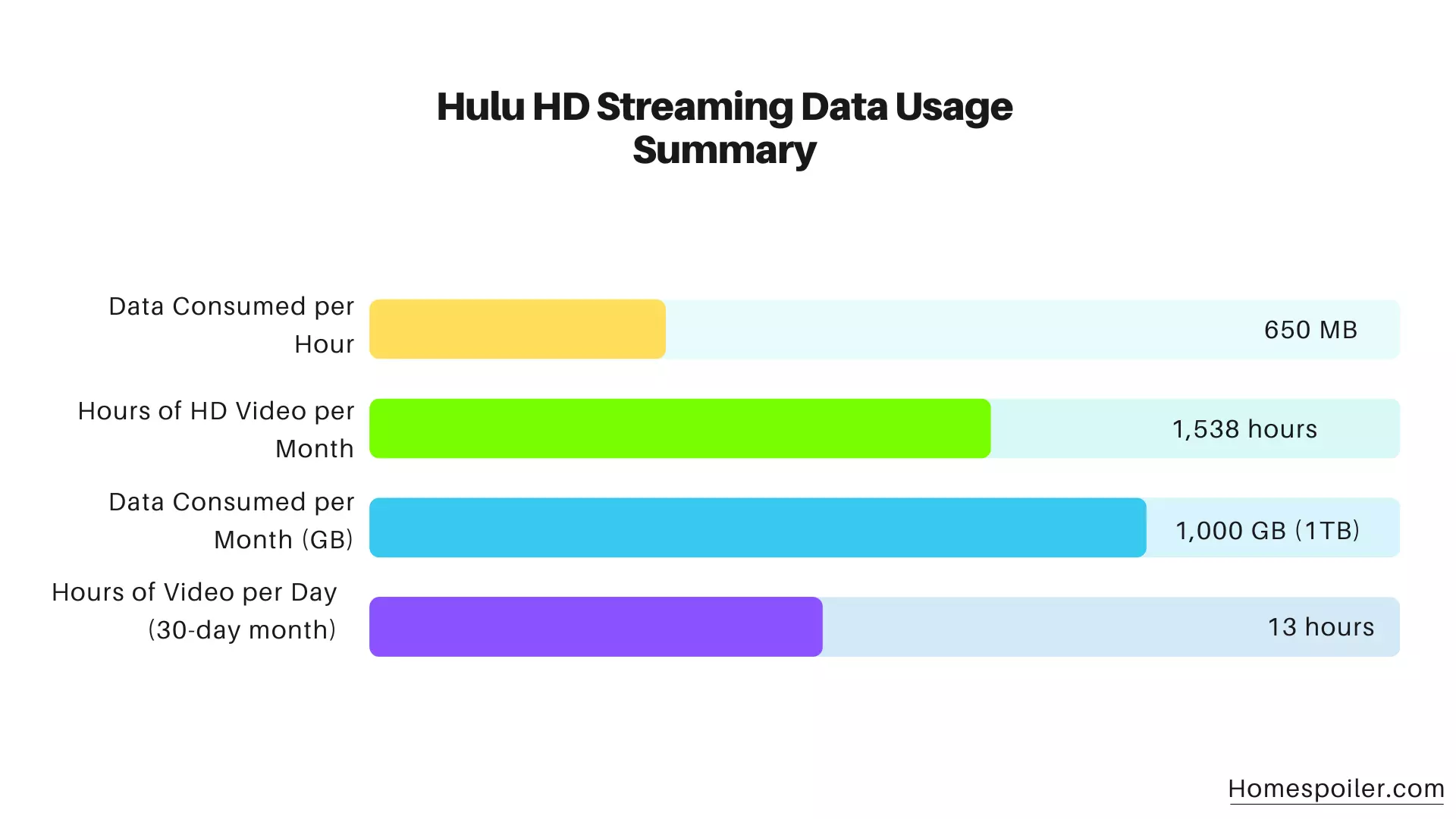For the past couple of years, Smart TVs have significantly transformed how we consume entertainment data.
Report says that smart TV users are forecasted to grow to 119 million by 2022, and the amount of data usage on these TVs has increased fourfold.
However, a question arises:
“How much data does a smart TV actually use?”
Usually, it varies depending on various factors like content quality and streaming service.
- A one-hour live broadcast requires 10 Mbps of bandwidth and around 1.5 GB of data consumption.
- A Smart TV can use between 225 MB/hour and 15.98 GB/hour streaming video depending on the resolution. 4K streaming uses significantly more data than full HD.
- Generally, a smart TV consumes under 1 GB for an hour-long HD (720p) streaming. The hourly data consumption for Full HD and 4K streaming is higher.
- A single stream running 24/7 will be in the region of 2.2 TB/month on HD and 5 TB/month for a 4K video.
How Much Data Does a Smart TV Use
Here is a breakdown of how much data some of the most popular streaming services use per hour:
1) Netflix

Netflix provides different quality options for streaming, including HD and SD.
Depending on your internet plan, you can use anywhere from 300MB to 7GB of data per hour while watching Netflix.
You also have the flexibility to adjust your bandwidth usage through your account settings.
To give you an idea, if you exclusively use Netflix, you could enjoy roughly 3,300 hours of video on the lowest quality setting or about 143 hours of HD video each month.
On a daily basis, that would translate to approximately 4.7 to 110 hours per day, depending on your chosen bandwidth settings.
2) Hulu

If you’re looking to save data while enjoying high-definition (HD) streaming, Hulu is the way to go.
When you watch HD content on Hulu, it consumes only 650 megabytes (MB) of data per hour.
Although Hulu no longer provides specific data control options in their settings or an official data usage chart in their FAQs, I found this information in a 2012 post on their official public forums.
With Hulu, you can watch approximately 1,538 hours of HD video each month.
That means, if you were to stream Hulu exclusively, you could watch around 13 hours of video per day in a typical 30-day month.
3) Amazon Prime Video
Although Amazon doesn’t publicly disclose these details, you can get an idea by considering the file sizes when you download videos for offline viewing.
I conducted a test using a Walking Dead episode:
- Standard Definition (SD) downloads consume around 0.38 gigabytes (GB) per hour.
- High-definition (HD) downloads use approximately 1.84 GB per hour.
- Ultra High Definition (UHD) downloads require about 6.84 GB per hour.
4) Disney+ and Youtube TV
Here’s a table breaking down how much data Disney+ and YouTube TV use:
| Streaming Service | Video Quality | Data Usage per Hour (GB) |
|---|---|---|
| Disney+ | SD | 0.35 |
| HD | 2.8 | |
| UHD | 6.84 | |
| YouTube | 480p | 0.3 |
| 720p | 0.7 | |
| 1080p | 1.5 | |
| 4K | 15.98 |
Note: These are estimates and actual data usage may vary depending on factors such as the quality of the stream, the device being used, and the internet connection speed.
Tips for Managing Smart TV Data Usage
The good news is that you can take steps to manage your Smart TV’s data consumption effectively:
- Adjust Streaming Quality: Most streaming services allow you to adjust the quality settings. Lowering the resolution can significantly reduce data usage.
- Monitor Data Usage: Keep an eye on your data consumption through your internet service provider’s tools or your Smart TV’s built-in settings. This will help you stay within your data plan limits.
- Set Data Alerts: Some Smart TVs let you set data usage alerts to notify you when you’re approaching your data limit.
References:
- https://clario.co/blog/how-much-data-does-streaming-use/
- https://www.tachus.com/post/streaming-tv-data-usage/

Abdul Kader, a handy guy and experienced founder of a TV repair shop in Gulshan, Dhaka, Bangladesh. He is mainly an expert in understanding and repairing different types of issues with Smart TVs and providing helpful insights on how to keep them in good working order. Read his Full Story.

